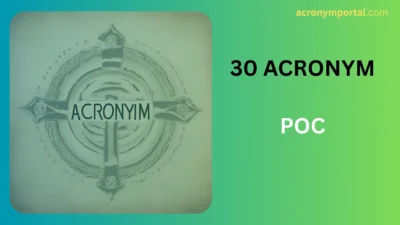When it comes to patient assessment, especially in medical or emergency settings, “OLD CARTS” is a tried-and-true acronym used by healthcare professionals. It helps guide the evaluation of symptoms—particularly pain—and ensures a thorough history is taken.
Let’s start with a quick refresher:
O – Onset
L – Location
D – Duration
C – Character
A – Aggravating factors
R – Relieving factors
T – Timing
S – Severity
While OLD CARTS is one of the most commonly used tools, it’s not the only one. In fact, various settings and clinical preferences have led to the development of alternative acronyms that emphasize different aspects of a patient’s condition.
This post introduces 30 alternatives to the OLD CARTS acronym, each suited for slightly different medical, clinical, or situational needs. You’ll also find when each version is best used, along with a sample question or explanation.
🩺 30 Acronyms Like OLD CARTS – Explained
1. OPQRST
Meaning: Onset, Provocation, Quality, Region/Radiation, Severity, Time
Example Question: What caused the pain to start?
Use for: Emergency medical settings—especially EMS.
2. OLDCART
Meaning: Same as OLD CARTS but without Severity (S).
Example Question: How long have you had this pain?
Use for: Primary care or general history-taking.
3. SOCRATES
Meaning: Site, Onset, Character, Radiation, Associations, Time course, Exacerbating/Relieving, Severity
Example Question: Can you describe the type of pain you’re feeling?
Use for: More in-depth pain assessments, especially in hospitals.
4. PQRST
Meaning: Provocation, Quality, Region/Radiation, Severity, Timing
Example Question: What makes the pain worse?
Use for: Focused pain assessments in nursing.
5. CHLORIDEPP
Meaning: Character, History, Location, Onset, Radiation, Intensity, Duration, Events associated, Provocative/Palliative, Progression
Example Question: Has anything else happened along with the pain?
Use for: Comprehensive patient history.
6. LIQORAAA
Meaning: Location, Intensity, Quality, Onset, Radiation, Associated symptoms, Alleviating factors, Aggravating factors
Example Question: What makes the pain feel better or worse?
Use for: Emergency room or urgent care.
7. COLDSPA
Meaning: Character, Onset, Location, Duration, Severity, Pattern, Associated factors
Example Question: Is the pain dull, sharp, throbbing…?
Use for: Holistic patient interviews.
8. PQRSTU
Meaning: Provokes, Quality, Radiates, Severity, Time, You (impact on patient)
Example Question: How does the pain affect your daily activities?
Use for: Patient-centered care.
9. PPQRST
Meaning: Position, Provocation, Quality, Radiation, Severity, Time
Example Question: Where exactly is the pain located?
Use for: Musculoskeletal assessments.
10. LOCATES
Meaning: Location, Onset, Character, Associated symptoms, Timing, Exacerbating factors, Severity
Example Question: Are there any other symptoms with the pain?
Use for: Primary and urgent care.
11. OPQRST-AAA
Meaning: OPQRST plus Aggravating, Alleviating, Associated
Example Question: What other symptoms are present?
Use for: Advanced trauma life support.
12. OLD CARTS ICE
Meaning: OLD CARTS plus Impact on life, Coping, Emotional response
Example Question: How is this pain affecting your life or mood?
Use for: Holistic or mental-health integrated care.
13. OLDCARTES
Meaning: Same as OLD CARTS, with E for Effects and S for Setting
Example Question: What were you doing when the symptoms started?
Use for: Contextual or environmental factors in care.
14. PAIN
Meaning: Pattern, Area, Intensity, Nature
Example Question: Describe the pattern of your pain.
Use for: Pediatric or non-specialist environments.
15. PIQRST
Meaning: Position, Intensity, Quality, Radiation, Severity, Timing
Example Question: What’s the intensity of the pain on a scale of 1–10?
Use for: Orthopedics or trauma.
16. PQRSTA
Meaning: Provokes, Quality, Radiates, Severity, Time, Associated symptoms
Example Question: Are you experiencing nausea with the pain?
Use for: GI or cardiac cases.
17. OLDCAARTS
Meaning: Extended version of OLD CARTS with an extra “A” for Associated symptoms
Example Question: Are there any other symptoms present?
Use for: Chronic conditions.
18. ASPN
Meaning: Associated symptoms, Severity, Pattern, Nature
Example Question: Does the pain come in waves or is it constant?
Use for: Neurological or migraine care.
19. OFTEN
Meaning: Onset, Frequency, Type, Effects, Notable triggers
Example Question: How often does this happen?
Use for: Recurrent symptoms like asthma or seizures.
20. QRST
Meaning: Quality, Radiation, Severity, Timing
Example Question: Is the pain spreading anywhere?
Use for: Quick assessments or triage.
21. WILDA
Meaning: Words to describe pain, Intensity, Location, Duration, Aggravating/Alleviating
Example Question: How would you describe the pain in your own words?
Use for: Empathetic, patient-driven care.
22. TACO
Meaning: Timing, Associated, Character, Onset
Example Question: When exactly did the pain begin?
Use for: Pediatrics and low-literacy communication.
23. HISTORY
Meaning: History, Intensity, Site, Timing, Other symptoms, Radiation, Your impression
Example Question: What’s your understanding of what’s going on?
Use for: Engaged, narrative-based care.
24. LORAT
Meaning: Location, Onset, Radiation, Alleviating, Timing
Example Question: Does changing position help?
Use for: Fast-triage or nurse assessments.
25. PPIEA
Meaning: Precipitating, Position, Intensity, Effects, Aggravating
Example Question: Does movement make the pain worse?
Use for: Musculoskeletal or back pain.
26. ISBAR
Meaning: Identify, Situation, Background, Assessment, Recommendation
Example Sentence: Used during handoff: “This is Ms. X, 72, with chest pain…”
Use for: Communication between healthcare providers.
27. ABCDE
Meaning: Airway, Breathing, Circulation, Disability, Exposure
Example Sentence: “Let’s follow the ABCDE approach for trauma care.”
Use for: Emergency life support.
28. AMPLE
Meaning: Allergies, Medications, Past history, Last meal, Events
Example Sentence: “What medications are you currently taking?”
Use for: Trauma history.
29. SAMPLE
Meaning: Signs/Symptoms, Allergies, Medications, Past history, Last meal, Events
Example Sentence: “When did you last eat?”
Use for: EMS and field evaluations.
30. HPI
Meaning: History of Present Illness
Example Sentence: “Let’s do a full HPI to document this complaint.”
Use for: Charting and narrative summaries.
🧠 How to Choose the Right Acronym?
When selecting the best tool, consider:
- Setting: In the ER? Use OPQRST or SAMPLE. In family care? OLD CARTS or SOCRATES.
- Detail needed: Need depth? Use SOCRATES. In a rush? Go with QRST.
- Type of pain: Musculoskeletal? Try PIQRST or PPIEA. Cardiac? PQRST or PQRSTA.
- Patient type: For children or those with low health literacy, TACO or PAIN works better.
- Emotional context: Use WILDA or PQRSTU to integrate the patient’s lived experience.
🩺 Final Thoughts
The OLD CARTS acronym is reliable, but medicine is dynamic—and so is communication. With so many helpful alternatives available, you can tailor your approach to match the patient, the symptom, and the setting.
Using the right acronym can improve clarity, foster empathy, and ensure no critical detail gets missed. Whether you’re a student, nurse, paramedic, or physician, learning these variants sharpens both your assessment and your connection with those you serve.




